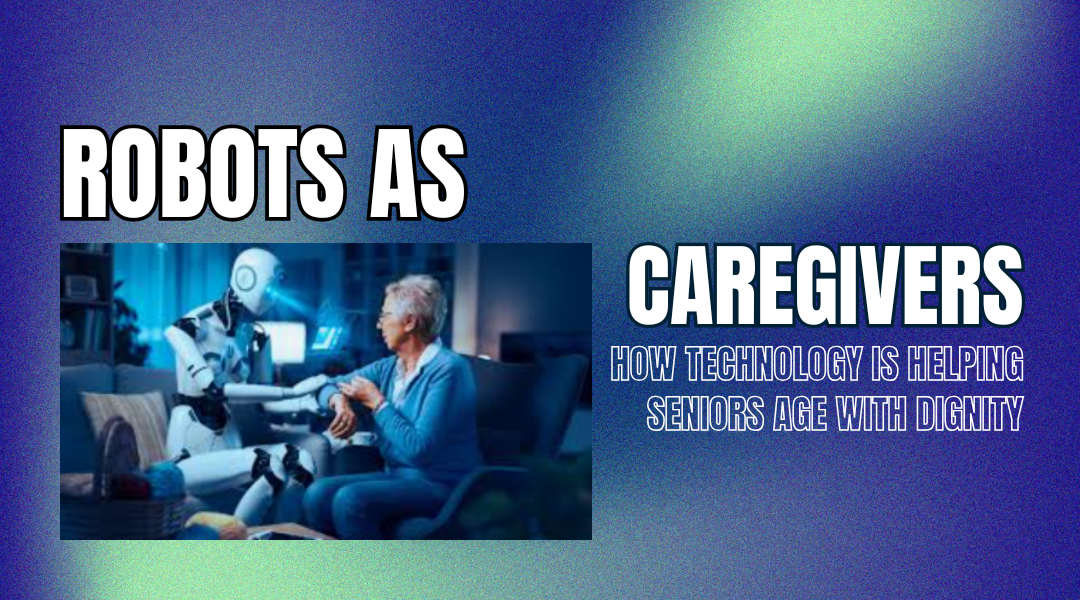The Silver Tsunami Meets Silicon Solutions
Let’s face it—The world is getting older. By 2050, one in six people will be over 65. With families stretched thin and healthcare systems straining under the weight of this demographic shift, an unlikely ally is stepping in: robots. But forget the cold, clanking machines of old sci-fi flicks. Today’s elder care bots are more like helpful roommates—some chat, some lift, and some might even save a life.
From Sci-Fi to Reality: The Evolution of Care Bots
A decade ago, the idea of robots assisting the elderly seemed futuristic. Now, they’re quietly proving their worth in nursing homes, rehab centers, and private residences. Japan, where nearly 30% of the population is over 65, has been an early adopter, with robots like RIBA (a gentle bear-like bot that lifts patients) becoming commonplace in care facilities. Meanwhile, startups worldwide are racing to build bots that don’t just assist but truly connect with seniors.
Meet the New Generation of Robotic Helpers
1. The Companions: More Than Just Talk
- Tombot’s Jennie: This animatronic Labrador isn’t just cute—it responds to touch, barks playfully, and has been shown to reduce anxiety in dementia patients as effectively as real therapy dogs.
- Sony’s Aibo: The rebooted robotic dog learns its owner’s habits, offering playful interaction without the vet bills.
2. The Strong Silent Types
- Yukai’s Bocco Emo: A pint-sized robot that doesn’t just remind Grandpa to take his pills—it texts the family if he doesn’t.
- Samsung’s Bot Care: This mobile assistant monitors vitals, calls emergency contacts during falls, and even guides users through light exercises.
3. The Watchful Guardians
- Cherry Home’s AI System: Uses discreet sensors (no cameras) to detect unusual activity—like if Mrs. Thompson hasn’t opened her fridge by noon.
- Stretch by Hello Robot: A mobile arm that fetches dropped items, preventing risky bends for those with fragile hips.
Why This Matters Beyond Cool Tech
For seniors, these bots aren’t about replacing human touch—they’re about preserving independence. Studies show that 90% of older adults want to “age in place.” Robots make that possible by:
- Preventing crises (like catching a UTI early through toilet sensors)
- Bridging isolation gaps (one widower in Sweden credits his ElliQ robot for “keeping me talking after my wife passed”)
- Reducing caregiver burnout (a robotic lift assistant can spare a nurse’s back during 20+ daily patient transfers)
The Elephant in the Room: Do Seniors Actually Like Them?
Adoption isn’t automatic. Some findings:
- The 15-Minute Rule: Most seniors warm to robots after just a few interactions—especially if they resemble pets or have humor built in (like the French robot Zora, which leads singalongs).
- Design Matters: Glossy white robots feel clinical; warm colors and soft edges (like Paro’s furry seal design) increase acceptance.
- Privacy Trade-Offs: While 70% of seniors in a recent MIT study valued health monitoring, many balked at cameras in private spaces—hence the rise of audio-only systems like Caregiver Smart Solutions.
Hurdles on the Horizon
- The Cost Conundrum: While a $200 Roomba is accessible, advanced care bots like GiraffPlus (which coordinates with multiple home sensors) can run $10,000—far beyond most budgets.
- Tech Support Nightmares: When a robot malfunctions at 2 AM, who fixes it? Some Japanese care homes now employ “robot butlers”—staff trained specifically for bot troubleshooting.
- The Uncanny Valley: Overly humanoid robots (think Ameca’s hyper-realistic facial expressions) often creep seniors out. The sweet spot? “Clearly machine, but kind.”
What’s Next? Robots That Grow With You
The future isn’t about standalone gadgets—it’s about ecosystems. Imagine:
- A voice assistant that notices slurred speech and alerts a stroke specialist
- A fridge robot that orders groceries when it detects weight loss
- A wall-mounted arm that helps you out of bed today but adjusts its strength as your mobility changes
The Bottom Line
These technologies work best when they’re invisible—enhancing life without demanding attention. As one Tokyo caregiver put it: “The best robot is one my mother forgets is a robot.” With 10,000 people turning 65 every day in the U.S. alone, that subtle, supportive approach might just redefine what it means to grow old.
